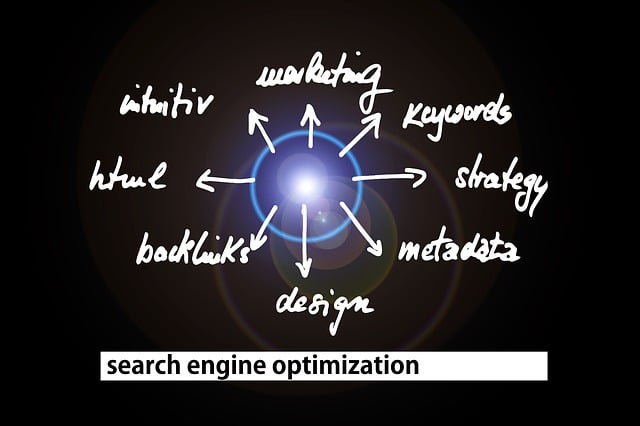Table of Contents
The Process of Backlink Indexing
Backlink indexing is an essential process in search engine optimization (SEO) where search engines analyze and include backlinks in their index for better visibility. The process begins when search engine crawlers discover a new web page through various means, such as sitemaps or by following links from other indexed pages. Once a new page is found, the crawlers start examining the content and structure of the page, including the presence of backlinks. These backlinks are then evaluated based on their quality, relevance, and credibility factors.
When evaluating backlinks, search engines consider several factors to determine their indexing value. Firstly, the link should come from a reputable and trustworthy website, as search engines aim to provide users with reliable information. Additionally, the anchor text used in the backlink should accurately describe the content of the linked page. This helps search engines understand the context and relevance of the connection. Finally, the relevance and authority of the linked page itself also contribute to the backlink’s indexing value.
Overall, the process of backlink indexing involves the discovery of new web pages, the analysis of their backlink structure, and the evaluation of backlinks based on quality and relevance factors. It is an integral part of SEO, as indexed backlinks can significantly impact a website’s visibility and organic ranking on search engine result pages.
Understanding the Backlink Indexing Timeline
The backlink indexing timeline refers to the duration it takes for search engines to recognize and include backlinks into their index. This timeline can vary widely depending on several factors. The first factor is the authority of the linking domain. Search engines tend to prioritize indexing backlinks from high-authority and trusted websites, as these are considered more valuable indicators of relevance and authority. In contrast, backlinks from low-quality or spammy websites may take longer to get indexed, if they get indexed at all.
Another factor that affects the backlink indexing timeline is the frequency of search engine crawls. Search engines continuously crawl the web to discover new content and updates. If a backlink is acquired shortly after a crawl, it is more likely to be indexed quickly. However, if the search engine’s crawl frequency is low or the backlink is acquired shortly after a crawl, it may take longer for the backlink to be indexed. It’s important to note that even after indexing, it may take additional time for the backlink to have a noticeable impact on search engine rankings.
Factors Influencing Backlink Indexing Speed
One important factor that can influence the speed of backlink indexing is the quality and relevance of the backlinks. Search engines prioritize indexing backlinks that come from authoritative and trustworthy websites. If the majority of inbound links pointing to a website are from low-quality or spammy sources, it can negatively impact the indexing speed. On the other hand, if the backlinks are from reputable sources that are relevant to the content of the website, search engines are more likely to index them quickly.
Another factor that can affect backlink indexing speed is the frequency of content updates on the website. Search engines tend to prioritize indexing websites that regularly publish fresh and relevant content. Therefore, if a website frequently publishes new articles or updates its existing content, the backlinks on that website are more likely to be indexed quickly. This is because search engines consider regularly updated websites as more valuable and authoritative, and they prioritize indexing their backlinks accordingly.
• Quality and relevance of backlinks: Backlinks from authoritative and trustworthy websites are prioritized for indexing.
• Impact of low-quality or spammy backlinks: Backlinks from such sources can negatively affect the speed of indexing.
• Importance of reputable sources: Backlinks from relevant and reputable sources are more likely to be indexed quickly.
• Frequency of content updates: Websites that regularly publish fresh and relevant content are prioritized for indexing.
• Value of regularly updated websites: Search engines consider them more valuable and authoritative, leading to faster indexing of their backlinks.
Techniques to Speed up Backlink Indexing
One effective technique to speed up backlink indexing is through social signals. Social signals refer to the engagement and sharing of content on social media platforms. When search engines detect high social activity around a particular webpage, they are more likely to prioritize it for indexing. Therefore, by actively promoting your backlinks on social media and encouraging others to share and engage with them, you can increase the chances of faster indexing.
Another technique is to submit your backlinks to reputable online directories and bookmarking sites. These platforms have high domain authority and are frequently crawled by search engines. By submitting your backlinks to these directories and bookmarking sites, you increase the visibility of your links and improve the chances of them being indexed quickly. Remember to select directories and bookmarking sites that are relevant to your niche and have a good reputation to ensure the best results.
Common Challenges in Backlink Indexing
One of the common challenges in backlink indexing is the vast amount of backlinks that search engines have to process. With the increasing number of websites and the countless backlinks they generate, it becomes a daunting task for search engines to index all the links efficiently. This can lead to delays in indexing and can affect the overall visibility and ranking of a website.
Another challenge is the presence of low-quality backlinks. Search engines prioritize high-quality and relevant backlinks, but they often come across spammy or irrelevant links that need to be filtered out. Identifying and removing these low-quality backlinks can be time-consuming and requires continuous monitoring and analysis. Moreover, the presence of such links can also have a negative impact on a website’s reputation and search engine rankings.
Dealing with these challenges requires website owners and SEO professionals to stay vigilant and proactive. By creating a solid backlink strategy and regularly monitoring and reviewing the backlink profile, one can tackle the issues related to backlink indexing effectively. Additionally, employing reputable SEO tools and techniques can help in identifying and resolving indexing challenges, ensuring that a website’s backlinks get indexed in a timely manner.
Tools and Strategies for Monitoring Backlink Indexing
There are several effective tools and strategies available for monitoring the backlink indexing process. One commonly used tool is Google Search Console, which provides valuable insights into the indexing status of your backlinks. This tool allows you to track the number of indexed pages, check for any crawl errors, and submit new URLs for indexing. By regularly monitoring the indexing status in Google Search Console, you can ensure that your backlinks are being properly recognized by search engines.
Another useful tool is Ahrefs, which offers a comprehensive backlink analysis and monitoring feature. With Ahrefs, you can check the index status of your backlinks, monitor the growth of your backlink profile, and track the ranking positions of your target keywords. Additionally, Ahrefs provides valuable data on the authority and quality of the websites that are linking to your site. By using these monitoring tools, you can stay informed about the indexing progress of your backlinks and make any necessary adjustments to improve your website’s visibility and search engine rankings.
The Role of Search Engines in Backlink Indexing
The role of search engines in backlink indexing is vital for the visibility and ranking of a website in search results. Search engines use web crawlers to discover new webpages and follow the links on those pages to index the content. When it comes to backlink indexing, search engines play a crucial role in determining the relevance and authority of the links that point to a particular website.
Search engine algorithms consider various factors when indexing the backlinks. One of the key factors is the quality and relevancy of the linking page. Search engines assess the trustworthiness, popularity, and domain authority of the linking page to determine the value of the backlink. Additionally, search engines also consider the anchor text used in the backlink, evaluating how it relates to the content of the linked page. By understanding the role of search engines in backlink indexing, website owners and marketers can optimize their link building strategies to improve visibility and organic search rankings.
Case Studies: Real Examples of Backlink Indexing Timeframes
Paragraph 1:
In the world of backlink indexing, real-life examples play a crucial role in understanding the timeframes involved. One such case study involves Company XYZ, a startup in the tech industry. After launching their website and implementing a backlink strategy, they anxiously awaited the indexing of their newly created backlinks. Within the first week, search engines like Google and Bing started indexing a portion of the backlinks. However, it took approximately three weeks for the majority of the backlinks to be indexed. This timeline can be attributed to various factors, including the authority of the referring websites, the quality of the backlinks, and the overall speed at which search engines crawl and index web pages.
Paragraph 2:
Another noteworthy case study revolves around Company ABC, an established e-commerce platform. After implementing a comprehensive backlinking campaign, they expected prompt indexing of their valuable backlinks. To their surprise, search engines took a significantly longer time to index their backlinks compared to Company XYZ. It took around four weeks for search engines to index the majority of their backlinks, with some taking up to six weeks. This lengthy timeframe can be explained by a variety of factors, including the competitiveness of the industry, the popularity of the referral sources, and the complexity of the linking structure within their website. These real examples emphasize the importance of patience and understanding the unique dynamics that influence backlink indexing timeframes.
Best Practices for Backlink Indexing
High-quality content and consistent execution are essential when it comes to best practices for backlink indexing. Firstly, it is crucial to focus on creating valuable and relevant content that naturally attracts organic backlinks. Publishing original and well-researched articles, blog posts, or resources that provide useful information to your target audience will generate genuine interest from other websites, increasing the chances of earning valuable backlinks.
Additionally, implementing a strategic outreach campaign can greatly enhance backlink indexing. By actively reaching out to influential websites and industry experts, you can encourage them to link back to your content. Personalized and targeted outreach messages, emphasizing the value your content offers, are more likely to elicit a positive response. Building strong relationships with other webmasters and creating mutually beneficial partnerships can significantly accelerate the process of backlink indexing.
The Future of Backlink Indexing
The future of backlink indexing holds immense potential for growth and advancement. As search engines continue to evolve and improve their algorithms, the process of backlink indexing is expected to become more efficient and accurate. With the increasing emphasis on quality and relevance, search engines may prioritize indexing authoritative and trustworthy backlinks, ensuring that users are provided with the most relevant and reliable search results. Additionally, advancements in technology, such as artificial intelligence and machine learning, are likely to play a significant role in enhancing the speed and effectiveness of backlink indexing, enabling search engines to analyze and index backlinks more intelligently.
Moreover, the future of backlink indexing may also witness the integration of social media signals as a ranking factor. With the growing influence of social media platforms, search engines might consider the number of social shares, likes, and comments a backlink has received when determining its indexing and ranking. This integration would provide a more comprehensive picture of a website’s authority and popularity, helping search engines deliver more personalized and relevant search results to users. Furthermore, as new technologies emerge, backlink indexing may also involve advanced techniques such as natural language processing and sentiment analysis, enabling search engines to understand the context and sentiment behind backlinks, and consequently, better evaluate their relevance and importance in search rankings.


